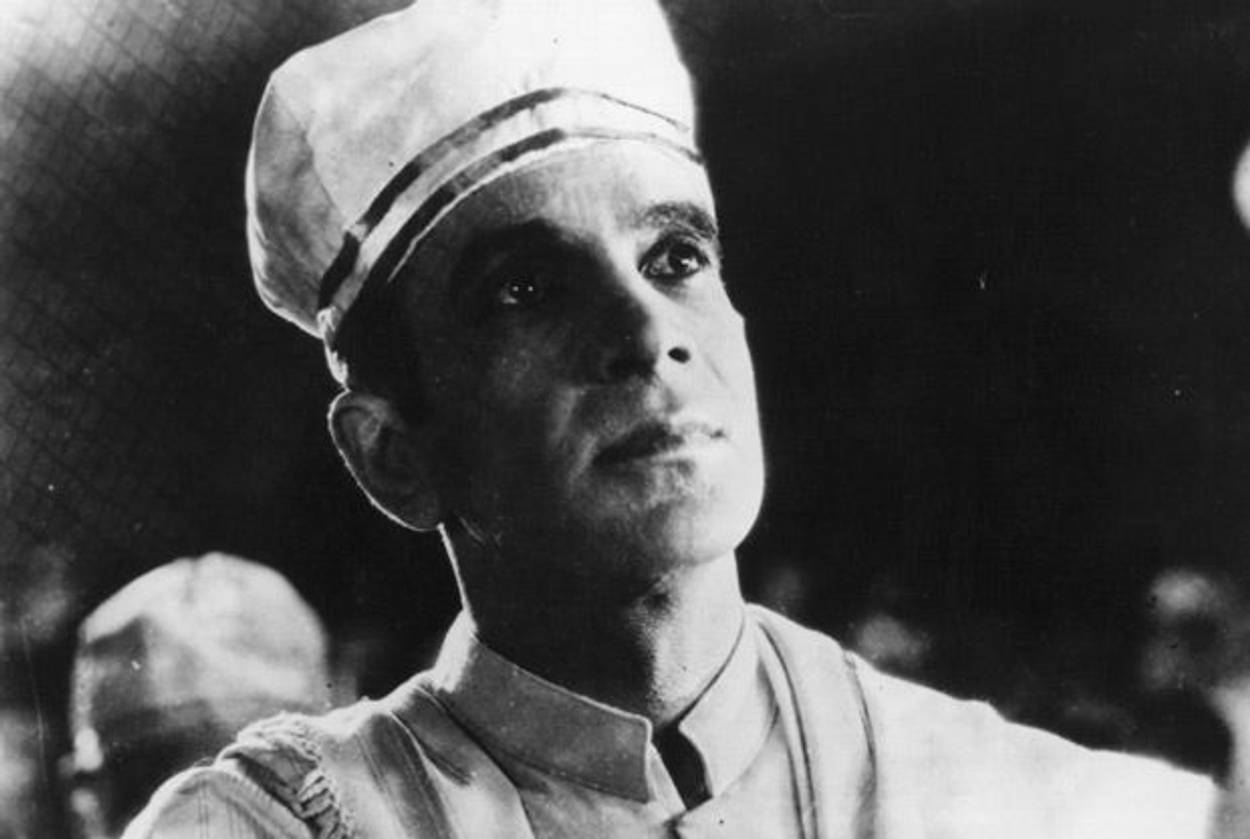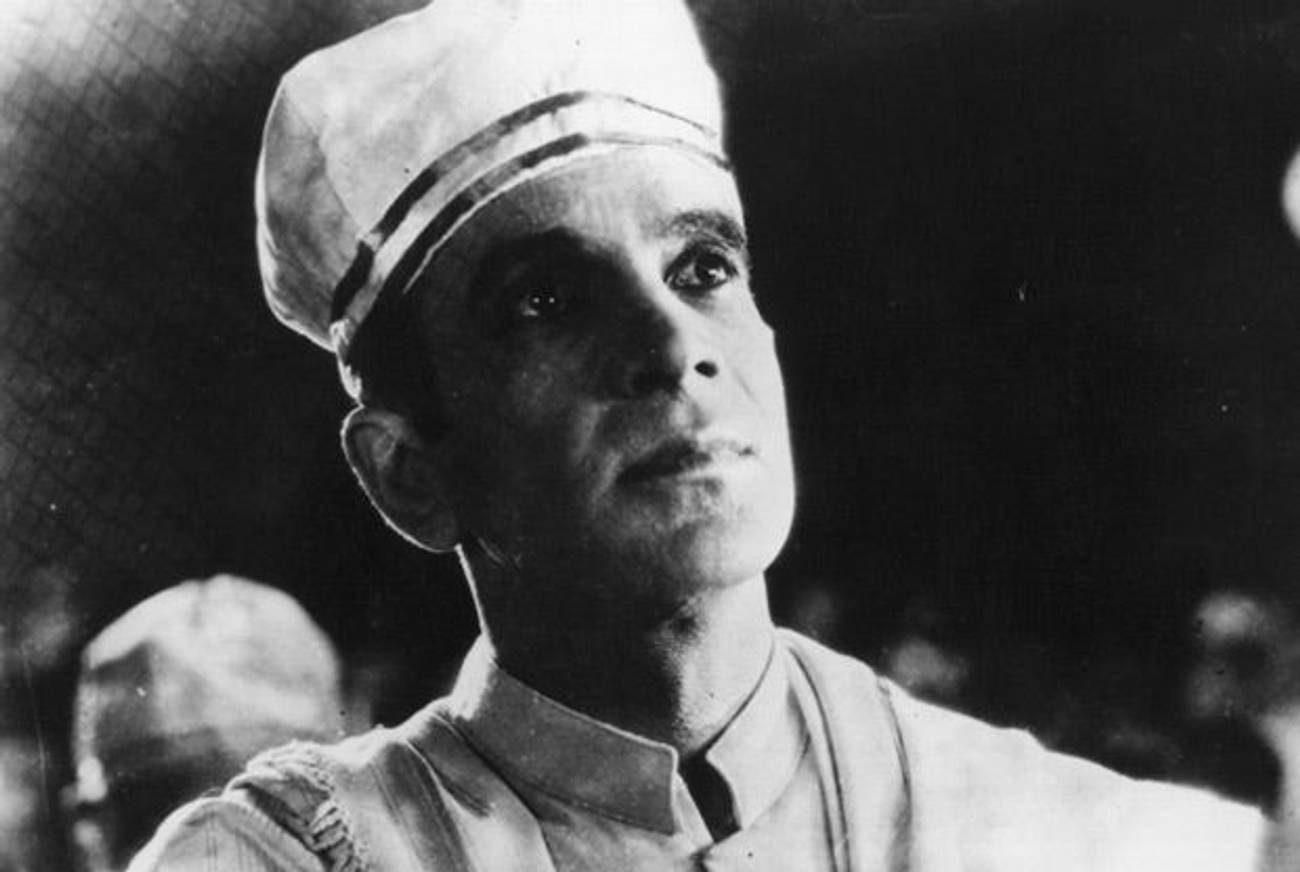Sacred Remake
We may talk of its eternal qualities, but the music of Kol Nidre is forever being made anew




Kol Nidre is the “Stairway to Heaven” of Jewish liturgical music—everyone who thinks they have chops has given it a shot, and, like “Stairway,” everyone who has recorded Kol Nidre feels the simultaneous pull to stay true to his or her sense of the “original,” while also putting a new, unique spin on it. (For a pretty thorough list of Kol Nidre recordings, check out the Dartmouth Jewish Sound Archive’s collection.)
If you go to synagogue at all, you go to hear Kol Nidre, because this is the one moment in the Jewish year where synagogues rise to meet expectations. But people aren’t coming to hear the words; it’s the melody that matters. And this, despite the fact that there is no definitive or authoritative version. The part that most people can hum is the meditation’s opening phrase. Beyond that, it’s up for grabs.
Despite the virtually pan-Ashkenazi love of the melody and claims about its “haunting power” or “eternal truth,” Kol Nidre is less a proper song and more a collection of musical motifs (or “nusach”), arranged and rearranged by each interpreter. It’s both drawn from folk melodies, and it annually rises above them, as congregations gather to hear this powerful melody even though there are as many variations as there are versions to choose from.
Cantorial Kol Nidre
During the second half of the 19th century, cantors began demanding fat contracts, and some began behaving like the operatic divo whom they emulated. As a result, the versions of Kol Nidre from this period capture their operatic ambitions and high cultural aspirations.
Warsaw’s Gershon Sirota, history’s first cantor to record himself, also became one of the first to record Kol Nidre. Sirota, known as the “Jewish Caruso,” gives the famous opening refrain over to his organ accompanist in order to give the opening lyric a little more of his signature vocal punch. Not to be outdone, Sirota’s main rival and colleague, Zawel Kwartin also recorded a version that clocks in at a full 90 seconds longer than Sirota’s. Kwartin’s version takes additional musical liberties—he only alludes to the beloved opening melodic line before taking full advantage of the High Holiday nusach to develop his own interpretation.
Cantor Yossele Rosenblatt, probably the best-known cantor of the “golden age,” recorded no fewer than three versions of the prayer, each of which takes some liberties with the arrangement but employs the same central musical motifs. Notably, Rosenblatt recorded his versions of Kol Nidre with an organ accompaniment, which is something that he would not have had in synagogue on Yom Kippur, given his traditionalist tendencies.
Modeled on the synagogue-style delivery, these classic recordings echo the prominence of cantors in Jewish worship of the early part of the 20th century, when they became vehicles for negotiating the tug of tradition and the allure of modernity, and their various interpretations of Kol Nidre speak clearly to that tension.
Classical Kol Nidre
Ironically, the version that set the famous opening line in the minds and hearts of many North American Jews belongs not to one of the great cantors, but to the German Protestant composer Max Bruch. Bruch, like many of his classical colleagues, had begun turning to folk music for source material, and he approached his Kol Nidre, or Opus 47, with the same sensibility. Bruch’s deeply romantic composition draws powerfully on traditional motifs, setting them amidst call-and-response string parts and harp glissandi, as if he was trying to heighten the melody’s affective overtones.
Bruch, for his part, never claimed to have written sacred or liturgical music, and Jewish musicologist Abraham Idelson agreed, writing, “[Bruch’s] melody was an interesting theme for a brilliant secular concerto. In his presentation, the melody entirely lost its original character. Bruch displayed a fine art, masterly technique and fantasy, but not Jewish sentiments. It is not a Jewish Kol-Nidre which Bruch composed.”
Although Bruch’s Kol Nidre has been adopted by congregations across North America, not everyone thought his orchestral setting suited the meditation. None other than Arnold Schoenberg set out to “obliterate the excessive sentimentality of Bruch’s cello.” In appropriately Schoenbergian style, his Opus 39 steamrolls Bruch’s romanticism in favor of a prickly sonic modernity expressed powerfully by brass and woodwinds, supported by strings that color fragmentary snatches of melody. Lest the arrangement not be anti-romantic enough, Schoenberg composed his as an oratorio, and the entire last half rests on the stentorian delivery of a story from the Kabbalah and an adaptation of the Kol Nidre text, in English, both backed by a soaring choir.
Crooning Kol Nidre
While Schoenberg and Bruch battled it out over who really captured the text, Kol Nidre found its way into American popular culture. The tune appears twice in the 1927 film The Jazz Singer (sung once by Yossele Rosenblatt and once by the film’s star, Al Jolson), and the opening motif punctuates a few different plot points. Successive remakes of the film (1952, starring Danny Thomas; 1959, starring Jerry Lewis, and 1980, starring Neil Diamond) all reach their dramatic climaxes to the sounds of Kol Nidre.
Partially as a result, Kol Nidre found its way off the screen and into the repertoire of at least two popular crooners of the mid-20th century.
Perry Como took the first mid-century crack at Kol Nidre from outside the Jewish community. Como doesn’t follow Sirota or Rosenblatt, or even Bruch. Instead, his version immediately recalls the most classically American version of Kol Nidre: Jolson’s. Como emulates Jolson’s phrasing, but even more tellingly, he adopts Jolson’s idiosyncratic adaptation of the classical text.
Johnny Mathis followed Como with a recording that owes its inspiration to Jolson, as well. Mathis credited his version of the song to Percy Faith, the Jewish bandleader who backed him on the recording, but both his delivery and his adaptation of the text, like Como’s, are pure Jolson.
Both singers take liberties with the liturgy, shuffling it around to the point of incomprehensibility, and both drown the meditation’s difficulties in strings, harp glissandi, and some softly cushioning choral call-and-response. The musical arrangements are but one context in which to hear these versions of Kol Nidre—the social context is another—as both men included the song on their “songs of faith” records during the 1950s.
Como recorded his version for his I Believe and Songs of All Faiths album (he also released it as a single (backed with “Eli Eli,” the album’s other Jewish song). Mathis took his turn in 1958, for his own collection called Good Night, Dear Lord, which included the same Jewish tunes: Kol Nidre and “Eli Eli.” In this context, with its close echoes of the Holocaust, the Cold War, National Brotherhood Week, and the expansion of American civil religion, Kol Nidre sounds less like a peculiar prayer of atonement and more like a musical appeal to Americans for religious tolerance—as long as everyone includes strings and harps in order to smooth out the prayer’s rough and prickly edges.
Cutting-Edge Kol Nidre
Some 10 years later, psychedelic rocker and proto-disco beat maker David Axelrod updated Schoenberg’s taste for the oratorio and distaste for the smoothness of mid-century pop, which he put on display in his version of Kol Nidre, for the Electric Prunes 1968 album, Release of an Oath. The Prunes’ record freely flows between Jewish and Christian themes and between rock and classical motifs, much like their previous release, Mass in F Minor. The Prunes, who by this time were represented only by Axelrod, offer up a Kol Nidre that hints at the prayer’s famous opening line but re-frames it with some overdriven guitar, four-on-the-floor drum parts, a free-jazz-inspired saxophone solo, the obligatory strings (see! it’s classical music), and an English translation of the prayer that recalls Spinal Tap more than Schoenberg. It’s not a rock version of Kol Nidre as much as a symphonic-psychedelic spasm of spiritual seeking.
One of the most moving adaptations of Kol Nidre has, by its own composer’s admission, “nothing in common with the traditional Jewish melody sung by cantors during this solemn ceremony. Late Beethoven and Arvo Part seem more like references here.” John Zorn’s Kol Nidre appears as an afterthought on his 1999 collection of string quartets. Zorn insists that he wrote the piece in less than an hour, at one sitting, and titled it long after the fact.
In a sonic recapitulation of the prayer’s central themes, Zorn’s Kol Nidre alludes to and dispenses with all those versions that came before it. It excludes the familiar refrains, lyrics, and liturgies. It avoids the sweetness of Bruch and the sharp angularities of Schoenberg. It is not an articulation of broad American religious tolerance nor is it an exposition on the themes of the holiday. Instead, it disavows all those other versions that came before it in order to re-imagine a relationship to them by titular allusion rather than literal adaptation. And, in an ideal statement of postmodernity, Zorn’s remake reminds us that even the original is, itself, a remake.
Ari Y. Kelman is Jim Joseph Professor of Education and Jewish Studies at the Stanford University Graduate School of Education.